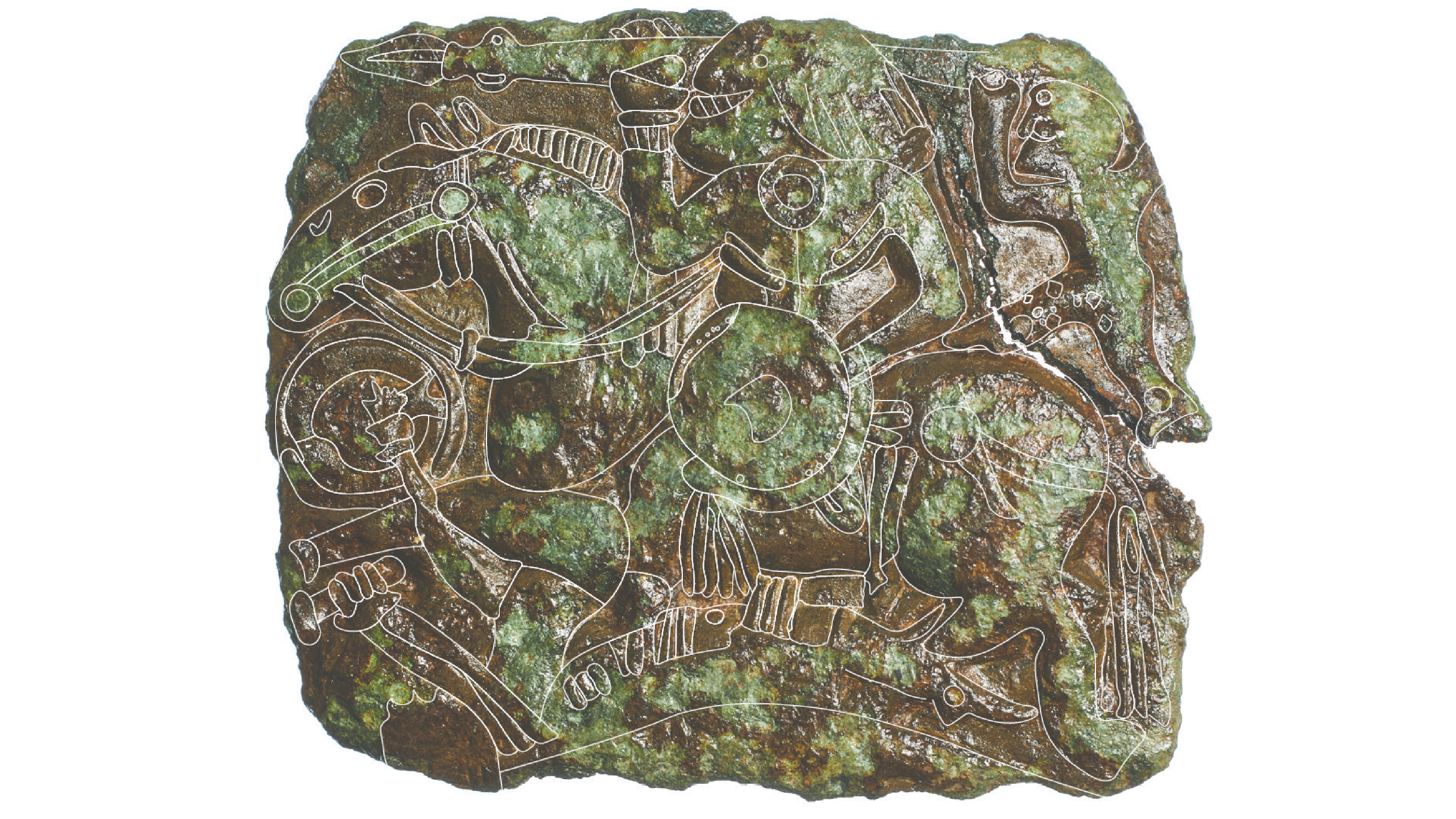
The famous seventh-century helmet from Sutton Hoo in England may have been crafted in southern Scandinavia, a new find suggests.
The idea comes from the discovery in Denmark of a bronze metalworking die or stamp that depicts a warrior on horseback.
Examinations show the design on the rectangular stamp is remarkably similar to the horse-and-rider motifs stamped into the metal of the ceremonial helmet, which was unearthed in 1939 from an Anglo-Saxon ship burial at Sutton Hoo in the east of England.
Similar motifs have been found on helmets from Sweden and jewelry from southern Germany, and scholars have suggested that the Sutton Hoo helmet may have been an heirloom or diplomatic gift from those regions.
The latest discovery confirms that the motif of a horse and riding warrior was indeed widespread throughout Northern Europe at that time.
“It’s definitely connected to the aristocracy,” archaeologist and prehistorian Peter Pentz, a curator at the National Museum of Denmark in Copenhagen, told Live Science. He noted that nobles from these times and places were expected to ride horses into battle.
The stamp was found on the Danish island of Taasinge roughly two years ago, amid the ruins of a metal workshop, and it is now on display in the museum.
Related: Photos: Snapshots of mysterious Sutton Hoo burial excavation revealed
Horseback-riding warrior
The Sutton Hoo helmet is a curious mixture of Northern European and Roman styles. It was rebuilt from hundreds of fragments found at the Sutton Hoo site, which also yielded ornate grave goods — including musical instruments, jewelry, tableware, weapons and armor — from a burial chamber built on the deck of the buried ship.
The helmet and its distinctive face mask are now icons of the Anglo-Saxon culture, which was established in eastern Britain during the early medieval period by migrants from what are now the coasts of Germany and Denmark.
Although Anglo-Saxon smiths were certainly capable of crafting such a helmet, the new discovery adds strength to the idea that it originated overseas, Pentz said. The horse-and-warrior motifs on the Sutton Hoo helmet are not identical to the ones on the stamp, but they show many similarities, including their depictions of the ears, manes, noses and tails of the horses, he said. He added that the stamp is also exactly the same size as the horse-and-riding-warrior motifs stamped onto metal panels on the Sutton Hoo helmet, which is now housed at the British Museum in London.
Anglo-Saxon England
Experts in England are excited about this new support for the idea that the iconic Anglo-Saxon helmet may have originated overseas. The similarity between the motifs on the stamp and the helmet “adds to the sense of quite how interconnected were the military elites of this period in north-western Europe,” Helen Gittos, a medieval historian at the University of Oxford, told Live Science in an email.
Gittos was not involved in the discovery at Taasinge, but she recently published a paper that suggested the helmet and other finds indicate some Anglo-Saxon nobles fought as mercenaries for the Byzantine Empire.
University of Chester archaeologist Howard Williams, who was also not involved, said the design on the stamp is the closest parallel yet found to the horse-and-warrior motifs on the Sutton Hoo helmet.
It now seems likely that the helmet was made in southern Scandinavia in the late sixth or early seventh century, or that it had been heavily influenced by the artistic style of that area, Williams told Live Science in an email.
“The motifs from Taasinge and Sutton Hoo are similar but not identical, reflecting a popular design used on helmets across a wide region,” he said.
Premium IPTV Experience with line4k
Experience the ultimate entertainment with our premium IPTV service. Watch your favorite channels, movies, and sports events in stunning 4K quality. Enjoy seamless streaming with zero buffering and access to over 10,000+ channels worldwide.

















